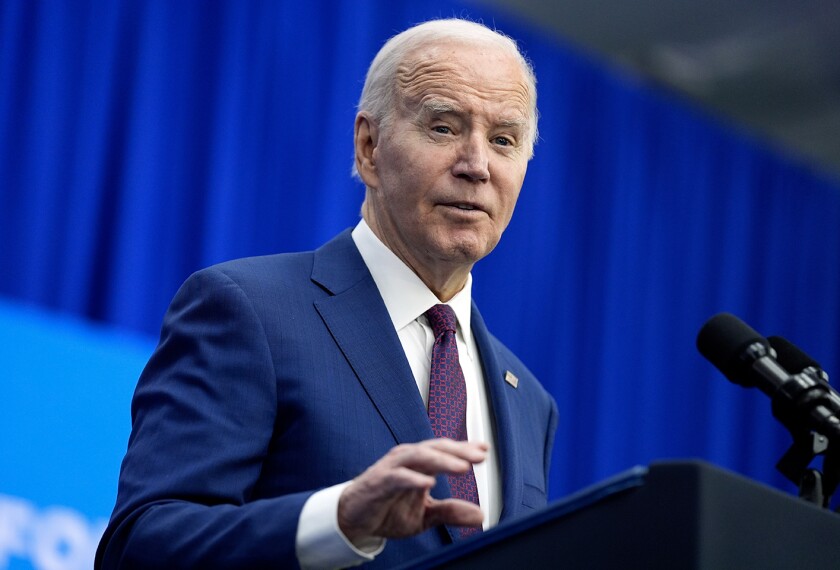The Biden administration is offering new grant funding and other resources to help school districts plan sorely-needed investments in the nation’s dilapidated school buildings and buses—though the offerings fall well short of schools’ needs.
The announcement comes just one week after the administration’s latest federal budget proposal, which does not include a previously proposed investment of $100 billion in grants and bonds for K-12 school infrastructure. Congress last year considered a similar investment as part of a broader infrastructure spending package, but lawmakers eventually excised public schools from their priority list as well.
This week the federal government announced new funding that amounts to half of 1 percent of those proposals.
A Department of Energy grant program will funnel $500 million from the Bipartisan Infrastructure Law passed by Congress last November for school districts to spend on priorities, including:
- comprehensive energy efficiency audits and building retrofits,
- HVAC and lighting upgrades,
- clean energy installation, and
- training for staff to maintain these improvements long-term.
Rural and high-poverty schools will get priority consideration from the agency.
America spends $110 billion a year on school infrastructure, but that hefty sum falls $85 billion short of the necessary benchmark to fully modernize school buildings nationwide, according to a 2021 report from a coalition of school infrastructure advocates.
Leaky roofs, moldy ceilings, flooded classrooms, suffocating heat, and overcrowded hallways are a fixture of the scenery for millions of America’s K-12 students, particularly in rural and low-income areas. Many school buildings that haven’t been renovated for decades can’t easily be upgraded because they weren’t built for modern equipment.
The federal government for nearly a century has supplied only a tiny fraction of those costs, leaving states and local governments to make up the rest.
Monday’s announcement of a “Biden-Harris Action Plan for Building Better School Infrastructure” also highlights new efforts by the administration to encourage investment in K-12 facilities. The White House will provide guidance to state and local governments that received funds from last year’s American Rescue Plan pandemic relief package on how to use those funds for infrastructure projects in concert with local school districts’ own federal relief aid.
The plan also includes documents that may be helpful for school districts, including:
- a toolkit that lists all opportunities for federal funds to support school facilities projects,
- a guide from the Environmental Protection Agency to improving air quality in school buildings,
- a guide to using the U.S. Department of Agriculture’s Rural Development grant program to assist with school bus electrification in rural areas,
- a series of webinars detailing the value of electric school buses and the opportunities to purchase them, and
- an invitation to join the Efficient and Healthy Schools Campaign, which is currently providing technical assistance for school modernization projects in at least 26 school districts, including the Charleston schools in South Carolina, the Columbia schools in Missouri, and the Newark schools in New Jersey.
Why is fixing America’s school buildings such a difficult task? Education Week last year compiled four big reasons.






